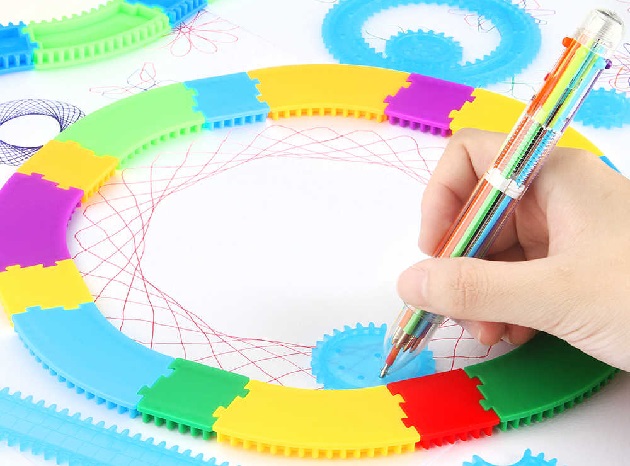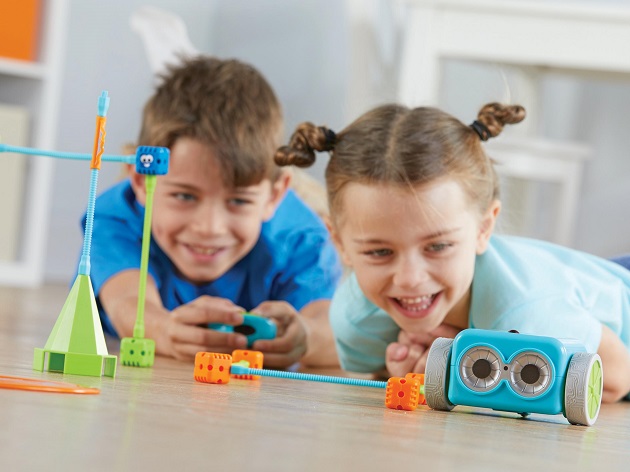How many times have you entered a toy store with the hopes of finding toys that can spark your child’s creativity? I bet a lot. However, despite the toys’ labels claiming they can help boost your little ones’ creativity, more often than not that’s not the case. The thing is, toys play an important part in your children’s creative abilities but it’s up to you to provide an adventurous environment for their physical and intellectual growth.
Provide Your Child with the Necessary Resources for Creative Expression
Leave ample time for your child to play alone. Although it is important for parents to spend time playing with their children, kids also need some alone playtime to enjoy themselves. Next, provide your little ones with their own space to explore and play in. That way, you can limit the mess they make to only one room rather than the whole house. And last but not least, you need to buy creative toys for kids. However, finding the right toys to develop this essential skill can be a challenge. Use the following tips for navigating the toy aisle.
- Keep it simple – Creative toys for children help them to be as active as possible and develop their imagination. Toys that are too colourful and feature a lot of buttons can be over-stimulating and overwhelming for young children. Plus, these toys operate mostly on their own, leaving little room for the child to take charge. Toys that are simple, have a clear cause and allow the child to be more focused and in charge of their experience are the best ones. Good examples of creative toys for kids include puzzles, board games, card games, shape sorters, dollhouses, arts and crafts, just to name a few.
- Choose toys according to your child’s age – If your child is 3 years old, there are certain motor, cognitive and social milestones that he/she is expected to meet at that age. For instance, using their imagination and engaging in pretend play. Choose creative toys that reinforce these milestones. It is very important to buy toys that are age-appropriate. Toys designed for a younger age won’t help develop new skills. Likewise, your child may not be ready to get the most out of the experience when playing with toys meant for an older age group.
- Opt for quality – Choose wooden toys over plastic ones; wooden toys typically leave more room for open-ended play, imagination, critical thinking and problem-solving. That is because wooden toys typically don’t have electronic components that can be distracting. Many find the simplified nature of wooden toys soothing and calming, allowing for a more focused play. Plus, wooden toys are natural and more durable with slight variations in weight and texture for their little hands to explore.
Give Your Child the Freedom to Explore
 Research has shown that giving children the freedom to make choices as they grow up improves their cognitive and moral growth. However, experts highlight that autonomy is not giving your kids permission to do whatever they want. For children, a sense of autonomy is to be able to explore freely with stipulated boundaries. You can allow them to pick which toy they want to play with or which fairy tales are you going to use for role-playing that particular day. Most importantly, be creative with your child’s choice. Creative parents raise creative children. Kids who are offered choices have higher chances of developing higher self-esteem and a sense of responsibility.
Research has shown that giving children the freedom to make choices as they grow up improves their cognitive and moral growth. However, experts highlight that autonomy is not giving your kids permission to do whatever they want. For children, a sense of autonomy is to be able to explore freely with stipulated boundaries. You can allow them to pick which toy they want to play with or which fairy tales are you going to use for role-playing that particular day. Most importantly, be creative with your child’s choice. Creative parents raise creative children. Kids who are offered choices have higher chances of developing higher self-esteem and a sense of responsibility.
Set Rules to Challenge Your Child
 Children’s attention span is short. When certain things bore them, they start to divert their attention to more interesting ones. So, capture your child’s attention by setting interesting rules. But for the rules to be effective, there needs to be clarity, consistency, communication, caring and creativity. ” I just want my child to have fun”, you may say. But don’t worry, your kid can be disciplined and you can still let him/her have fun at the same time. For example, on your next play session, challenge your little one to build a castle with 30 building blocks. See the outcome and tweak the rules to have a better experience on your next play session.
Children’s attention span is short. When certain things bore them, they start to divert their attention to more interesting ones. So, capture your child’s attention by setting interesting rules. But for the rules to be effective, there needs to be clarity, consistency, communication, caring and creativity. ” I just want my child to have fun”, you may say. But don’t worry, your kid can be disciplined and you can still let him/her have fun at the same time. For example, on your next play session, challenge your little one to build a castle with 30 building blocks. See the outcome and tweak the rules to have a better experience on your next play session.
It is important to understand that a change doesn’t happen overnight! A continuous effort is necessary to keep the creative process developing. Keep in mind that small but consistent efforts can go a long way.

